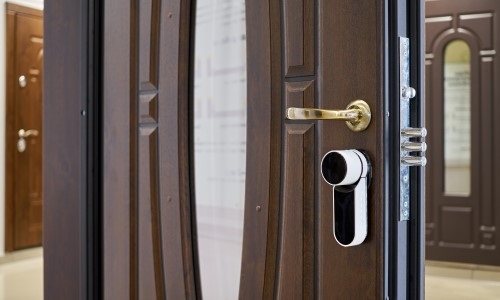
7.26.22 – SSI – Jennifer Kent
Both integrators and manufacturers must capitalize on the increased popularity of smart access control products and their integrations.
The smart residence starts at the front door. Smart door locks, smart access control systems, networked cameras, video doorbells, smart garage door openers, parking access solutions, and other IoT devices represent a new generation of access control and monitoring solutions.
Parks Associates’ new whitepaper “Smart Locks and Access Control Supply Chain: Scaling Innovation,” developed in partnership with PassiveBolt, highlights the rise in demand for secured smart spaces, the growing ecosystem of competitors and the need for manufacturers to establish partnerships with suppliers who can help them adapt quickly to new opportunities.
The research firm reports that 15% of MDU owners/operators report having a secure access system for common property areas, including IoT devices that they can access and control remotely; a similar percentage have connected access solutions for individual units.
Further, 11% of U.S. Internet households, or over 12 million households, owned a smart door lock, nearly double the adoption rate five years prior. With purchase intentions also rising, Parks Associates’ research also finds that 29% of U.S. broadband households reported an intent to purchase a smart door lock in the next six months, up from just 21% in 2018.
The smart door lock market could benefit by reevaluating its market structure and exploring ways to realign industry relationships to drive the next wave of innovation at scale.
As connectivity becomes a requirement to stay competitive, value creation moves to new sets of features and applications. Manufacturers must constantly innovate and explore new strategies to take products to market quickly. The simultaneous improvement of computing, sensing and networking technologies transforms products and services across industries.
Manufacturers, including those in the smart door lock and smart access control markets, are undergoing organizational transformation to deliver on the promises and requirements of making and supporting connected solutions.
Smart door lock adoption continues to be driven by multichannel solid sales efforts and continual product innovation. Most residential door locks installed in the U.S. are mechanical, but an increasing number of exterior locks in single-family homes are being replaced with smart door locks.

Across single-family, multifamily, retail and commercial spaces, builders, and owners are adopting connected entry solutions to create more secure and functional spaces.
Smart door locks and associated whole-building access control systems have fueled the recent acceleration in smart apartment adoption, while several major production builders now include them in standard specifications.
Feature innovations, such as biometric verification, integrated video cameras, voice control via smart speakers, and integration with home delivery services, help to raise awareness and value perceptions of smart door locks. That increased awareness triggers sales in retail, security, home builder and system integrator channels
Smart access companies constantly look for incremental innovation, progress and technology development that improve products yearly. Suppliers have an opportunity to better serve manufacturers by operating on a Tier-1 structure, which could provide a more systematic and cost-efficient approach for the development and release of the next generation of products.
Jennifer Kent is VP, Research, Parks Associates.
Download the complimentary whitepaper “Smart Locks and Access Control Supply Chain: Scaling Innovation” here or visit ParksAssociates.com to learn more.
